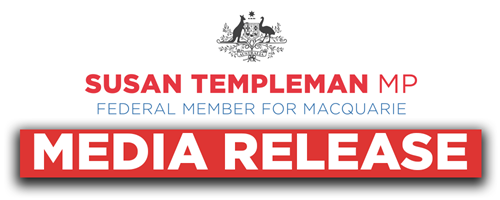
THEY KNEW WE WERE UNDER-INSURED FOR BUSHFIRE SIX YEARS AGO LITTLE HAS CHANGED AS MORE HOMES ARE LOST
Losing your home to a bushfire is a dreadful experience. I know, because along with 200 other families, I lost my Winmalee home in the 2013 Blue Mountains bushfires. But what’s worse than losing your home to a bushfire is being told afterwards that you’re under-insured. I know how that feels too.
In 2013, a few days after the fire swept through the lower Blue Mountains, I stood in a packed room with hundreds of people whose houses were destroyed. The Insurance Council of Australia spokesperson informed us that the majority of us were under-insured.
We didn’t realise what that meant at the time, because we all believed we’d insured our homes appropriately. And we had just received cheques from our insurers paying out our policies, and therefore had several hundred thousand dollars in the bank, which we were confident we could use to rebuild our homes.
But insurance companies knew we didn’t have enough money to rebuild, and they had known for a long time. I’m disgusted that the experience of the Blue Mountains is being repeated six years later in the current fire season, which has destroyed 680 homes in NSW on the Rural Fire Service's latest count.
In the wake of the recent fires, the Insurance Council of Australia told media that under-insurance would be high. The Insurance Council’s Campbell Fuller was quoted saying "about 80 per cent of insured property owners are probably underinsured".
This figure is frightening because it means hundreds of home owners will have the experience we had in the Blue Mountains – the agonising decision of whether to try and rebuild your home on the old block, to the new standards, or move.
You’d wonder how so many people could be unintentionally under-insured. For most people, the market price of the home is your guide to home insurance. But as we found out, the market price you paid 20 or 30 years ago doesn’t cover the myriad protections that are required in a new house construction.
The ratings system – known as BAL (Bushfire Attack Level) – came in after the devastating 2003 Canberra bushfire. They mean the closer you are to the bush, the more expensive your home is to build.
It might not look any different to the house across the street, but it will have extra layers of protection in the Colourbond roof, steel shutters, and, in our case, glass that costs thousands of dollars per square metre.
Very few of us in the Blue Mountains had any idea how significant those extra costs of rebuilding would be.
Within days of our houses burning down, insurers assessed our properties but told most of us they weren’t going to rebuild the houses. Instead, they would pay us out and we could do our own reconstruction. The insurance payout sounded reasonable.
It was only when we gathered in that meeting in Springwood and spoke with builders that we realised how expensive replacing our homes would be.
Our options were limited. Many of us combined our contents and home insurance payouts simply to cover the house construction; others borrowed more money to rebuild, increasing mortgages that were close to having been paid off.
As a result of unintentional under-insurance, six years on, I have vacant blocks either side of my rebuilt home. My guesstimate is that about a third of home-owners found the extra costs too heavy a burden, and, rather than rebuild, bought an older home in the same or nearby suburb. Another third moved away completely, and only about a third of us rebuilt on the same block.
Keep in mind that these huge decisions are being made while you are still in a state of shock, grief and trauma. At the very least, you have lost every single possession you ever had, and, at worst, there has been a horrifying loss of life. In between are stories of bravery and danger, and an event that marks everything in your life as “before the fire” or “after the fire”.
The trauma of under-insurance continues today as the direct result of a lack of action by both the federal government and insurance industries.
I acknowledge some attempts to improve insurance sales practices since 2013: the industry’s online insurance calculator is more likely to give a closer estimate of the actual costs today. But not enough is being done to educate consumers about their bushfire under-insurance until after a disaster hits.
It needs strong action and a comprehensive campaign backed by government to get home owners’ awareness raised. I didn’t understand the need until it happened to me, and then it was too late.
This piece was first published by The Sun Herald on Sunday, 8 Decemb


